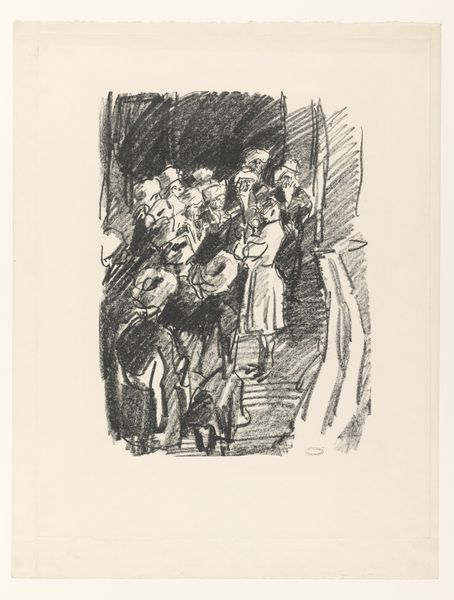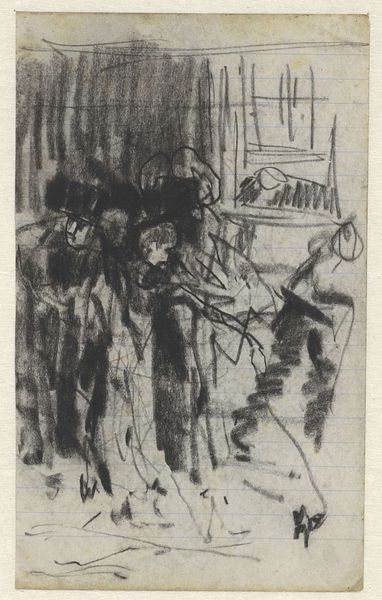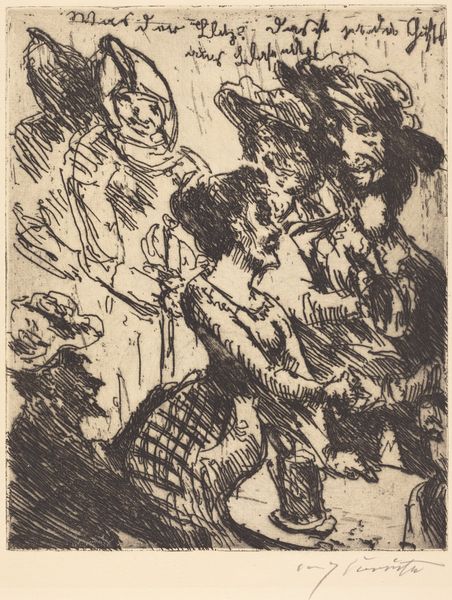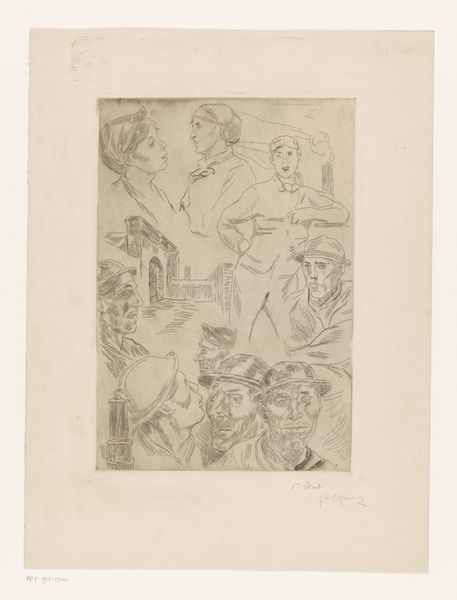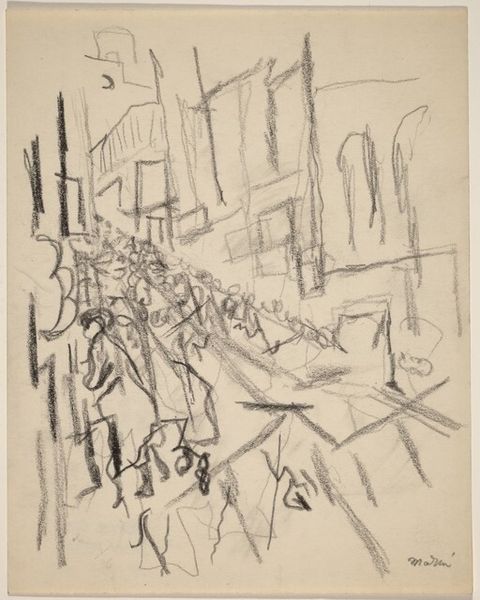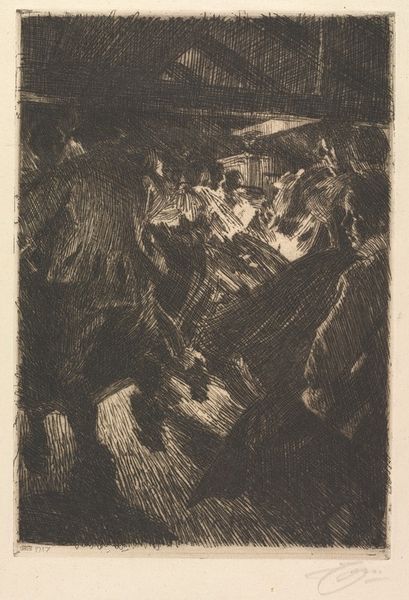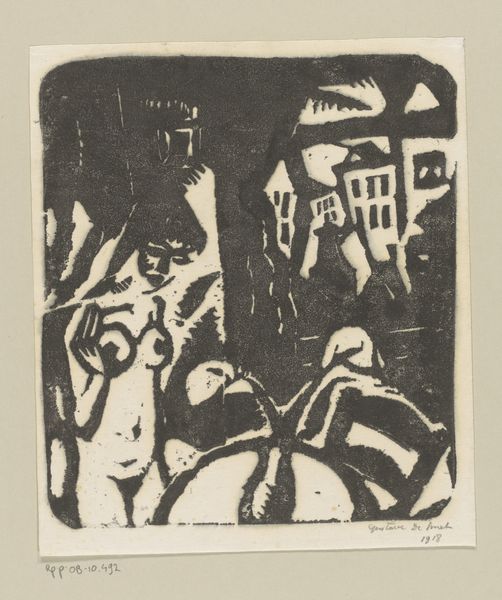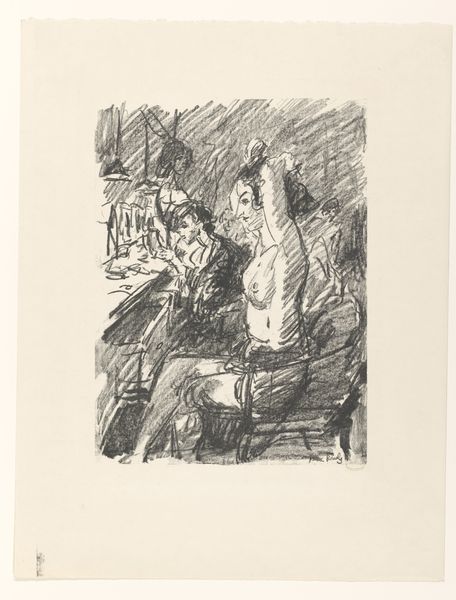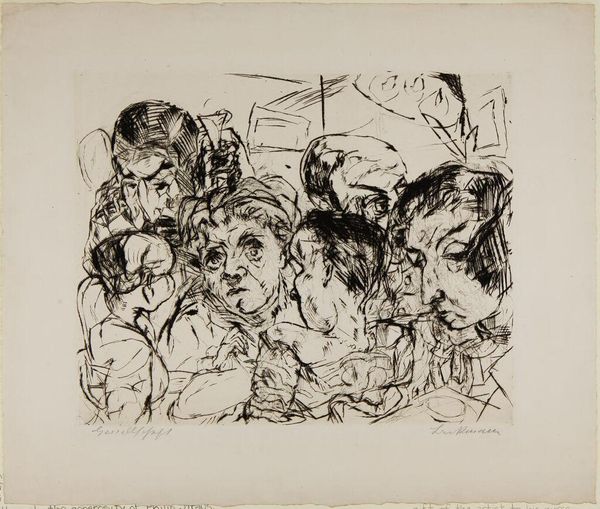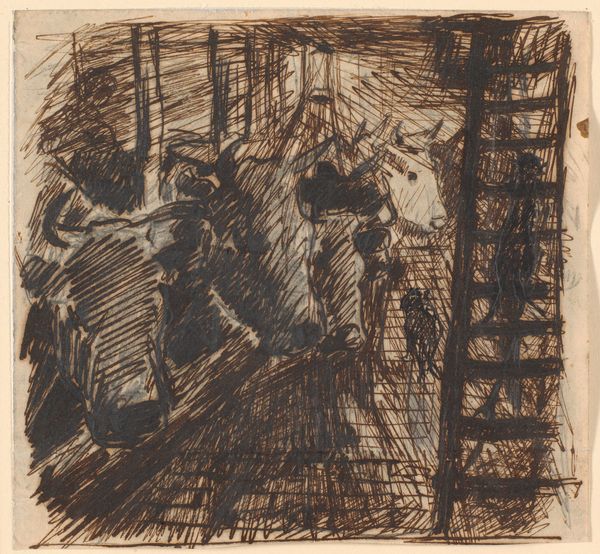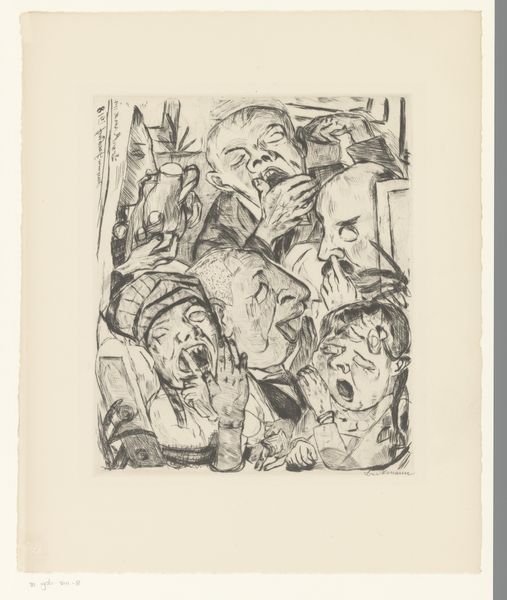
drawing, print, ink
#
drawing
#
ink drawing
#
narrative-art
# print
#
figuration
#
ink
#
expressionism
#
cityscape
Dimensions: sheet: 54 × 39.1 cm (21 1/4 × 15 3/8 in.)
Copyright: National Gallery of Art: CC0 1.0
Editor: Here we have René Beeh’s 1921 ink drawing and print, "Street Scene with a Cripple and a Praying Man". The high contrast and distorted figures give it a very unsettling mood. What do you see in this piece, considering its time? Curator: The drawing hits you viscerally, doesn’t it? Considering it was created in 1921, it's impossible to ignore the socio-political context. Germany, still reeling from the trauma and economic devastation of World War I, was witnessing a surge in social inequality and unrest. Notice how Beeh portrays the marginalized, the "cripple" and the "praying man"—they aren’t simply individuals but rather symbols of a fractured society. How do you interpret the relationship between these figures and the city itself? Editor: It feels like the city is bearing down on them. They seem trapped, almost consumed by the urban environment and their circumstances. Curator: Exactly! Beeh is engaging with a long tradition of artists depicting the harsh realities of urban life, particularly the plight of the poor and disabled. Expressionism allowed artists like Beeh to amplify those realities and engage in social critique. The faceless crowds behind them contribute to a sense of alienation. Considering that the artist, Rene Beeh, lived through immense trauma as a medic in World War 1, would you read his portrayal of crippled and praying men as representative of the artist's lived experiences and emotions? Editor: I hadn't thought of the artist's experience as a medic, but it casts a new light. It definitely amplifies the personal dimension of the artwork; trauma not only felt but witnessed. This creates another dimension of narrative. Curator: Precisely! These narratives of trauma are interwoven with larger social concerns and highlight a crucial link between art and lived experience. So what’s your take away? Editor: I now understand the work goes beyond just portraying a scene; it's a commentary on the social impact of war, rendered through a very personal and expressionistic lens. Curator: Indeed, a lens that demands we confront uncomfortable truths.
Comments
No comments
Be the first to comment and join the conversation on the ultimate creative platform.
